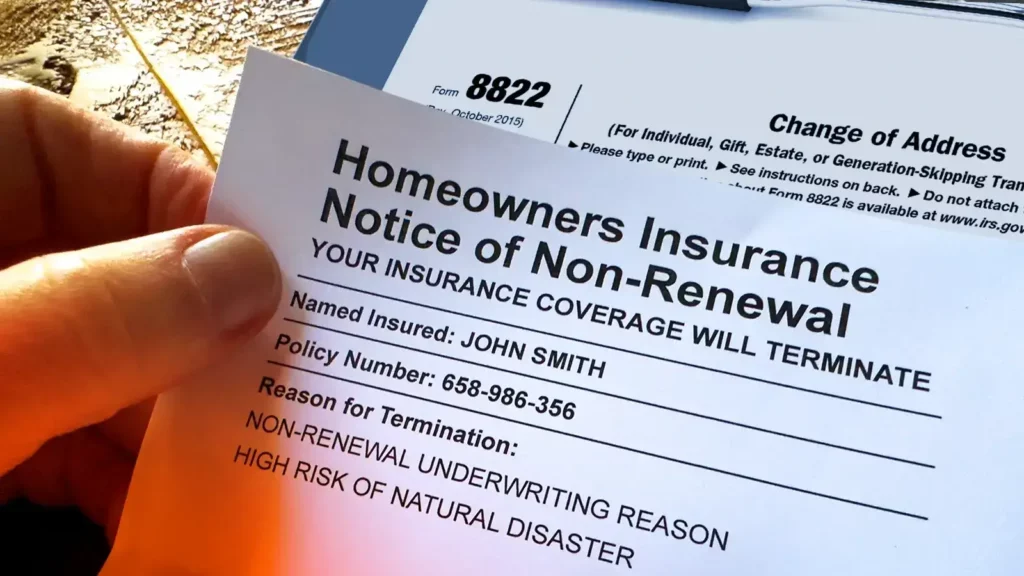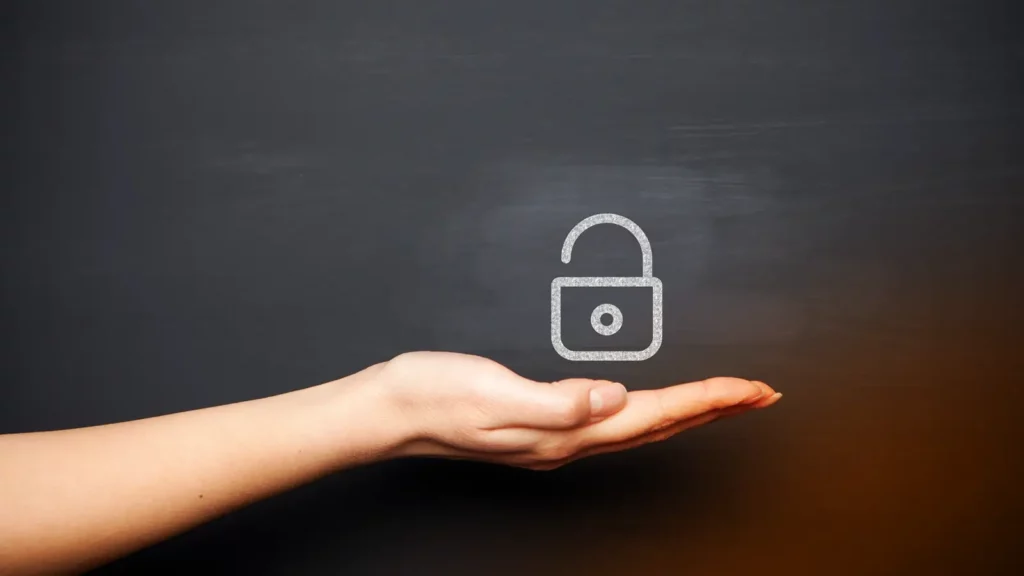Embracing the convenience of mail forwarding services empowers you to effortlessly update your mailing address, ensuring seamless mail delivery even when you’re away from your primary residence.
However, as the popularity of these services grows, so does the risk of exploitation by fraudsters. The alarming surge in mail theft cases over the past decade, soaring by a staggering 600% from 2017 to 2020 (from 25,000 to 177,000 incidents), underscores the urgency of understanding and countering mail forwarding scams.
In this comprehensive guide, we delve into the intricate realm of mail forwarding scams, equipping you with the knowledge to fortify your defenses and thwart unscrupulous schemes.
Unveiling Mail Address Scams: Protecting Yourself from Fraud

Mail address scams constitute deceitful ploys that exploit the United States Postal Service to reroute your mail to an unauthorized destination, all without your awareness or consent.
Once the mail redirection occurs, perpetrators gain access to your mail and exploit your personal details to engage in broader identity theft crimes.
No one is immune to the threat of mail address scams, as vital documents and crucial communications continue to flow through traditional paper/postal channels. These documents can include:
- Official Internal Revenue Service (IRS) notifications
- Credit cards, debit cards, and bank statements
- Driver’s licenses
- Jury duty summons
- Immigration notifications
- Social security disbursements
- Medicare communiqués
Each of these items houses sensitive information and personal data—a treasure trove for fraudsters. These criminals seize your private information to orchestrate identity theft.
In addition to mail forwarding schemes, other variants of mail fraud include:
- Pyramid schemes and financial crimes
- Bogus lotteries
- Get-rich-quick investment prospects
- False charities and charitable appeals
- Inexpensive credit card offers
As it currently stands, the prevailing and simplest technique employed by wrongdoers in mail theft revolves around mail forwarding scams.
The forwarding address scam exploits the change of address request process facilitated by the United States Postal Service (USPS), making the address change process a prime avenue for criminal activity.
The Most Common Scam: Change of Address Fraud
Change of address fraud stands as one of the most prevalent scams that fraudsters consistently and effortlessly exploit.
The United States Postal Service (USPS) offers an astonishingly simple process to update your mailing address when moving or embarking on an extended absence from your permanent address.
- A straightforward change of address form submitted to the post office (either online on the USPS website or in person at a post office) is all it takes to get started.
- Following your submission, USPS promptly reroutes your physical mail to the new address.
- To ensure authenticity and security, a nominal fee of $1 is charged to your credit card for the completion of the change of address request.
- The vulnerability lies in the fact that malicious actors can easily assume your identity and execute the change of address form without your knowledge.
- Leveraging your credit card details, they circumvent the security verification steps, promptly effecting an address change to a mailing address of their convenience.
- By the time you become aware of the address fraud, these scammers may have already perpetrated identity theft, potentially applying for credit cards and loans in your name.
- Should you fail to detect these mail forwarding scams in a timely manner, USPS may remain oblivious, continuously directing your physical mail to the fraudster’s address.
Identifying Key Indicators of Change of Address Scam

Once perpetrators successfully execute mail forwarding scams, several distinct indicators emerge:
- Unusual Activity
- Be vigilant for signs such as an influx of scam emails from unfamiliar websites, receipt of a USPS change of address confirmation form unexpectedly, or a sudden halt in receiving your customary paper mail.
- Fraudulent Transactions
- Scammers frequently expedite credit card fraud after executing mail forwarding scams.
- Consequently, any unusual credit card charges should raise suspicion as a potential hallmark of such scams.
- Scammers frequently expedite credit card fraud after executing mail forwarding scams.
Upon noticing these red flags, it’s imperative to promptly engage with USPS. Additionally, you have the option to report instances of mail fraud to the US Postal Inspectors. Given scammers’ swift actions, time is of the essence when reporting mail forwarding scams.
Delaying your response could result in more severe repercussions, including enduring a compromised credit rating or being burdened with repaying fraudulent loans you never authorized. This scenario also entails expending substantial hours and days to unravel the ensuing turmoil.
Shielding Yourself from Scams and Identity Theft: A Few Ways You Can Avoid Becoming A Victim

While achieving absolute immunity from mail forwarding scams may be challenging, implementing the following strategies can significantly diminish the risk of falling victim to scammers:
- Promptly and Consistently Inspect Your USPS Mail
- Maintain a routine of swiftly examining your physical mail from USPS.
- This proactive approach ensures you promptly recognize any change of address confirmation forms, a definitive indication of potential mail forwarding scams.
- Safeguard Your Personal Data
- Dispose of unsolicited mail containing crucial personal information by shredding it.
- This precautionary measure serves as a deterrent against identity thieves who might scour your discarded materials for sensitive details.
- Exercise Vigilance Over Your Finances
- Regularly monitor your credit reports, bank account and other financial accounts, while meticulously scrutinizing credit card statements for any unauthorized charges. This diligent oversight enables the timely detection of potential fraudulent activities.
- Keep Your Address Details Current
- If you possess multiple addresses or have relocated from a prior address documented by a bank or other institutions, ensure your address (home address, billing address, etc.) information remains up to date.
- This practice minimizes the risk associated with outdated records, reducing your vulnerability to scams.
- If you possess multiple addresses or have relocated from a prior address documented by a bank or other institutions, ensure your address (home address, billing address, etc.) information remains up to date.
Steer Clear of Common Scams with the Power of a Virtual Address

The solution to significantly reducing your vulnerability to mail forwarding scams lies within the realm of a virtual mailbox.
- By embracing a virtual mailbox, you sidestep the risks posed by paper mail and parcels reaching your residential address.
- Instead, they find their way to a secure and monitored facility.
- Notifications about your mail are promptly relayed to your mobile device, granting you access at any time and from any location.
- This innovative approach empowers you to securely view images of your mail items and take charge of your correspondence.
- Once you view your mail digitally from your app, the choices are yours to make:
- Request mail items or packages to be opened and scanned, forwarded to an alternate address, shredded or recycled, or scheduled for convenient pickup.
- Even your larger parcels and packages are afforded optimal security.
- With this level of control, you’re the one making the decisions, not potential scammers.
With a network encompassing more than 2,100 virtual mailbox locations across the US and worldwide, you enjoy the freedom to access your mail effortlessly, all while sidestepping the pitfalls of postal mail forwarding scams.
Moreover, if the need arises, you can confidently switch to a new virtual address, assured of a safe and seamless transition.
Frequently Asked Questions About Mail Forwarding, Change of Address Fraud, and Identity Theft (FAQs)

Q: What is a mail forwarding scam, and how does it work?
- A mail forwarding scam involves fraudsters changing your mailing address without your knowledge or consent.
- They typically exploit the change of address process offered by postal services, redirecting your mail to an address under their control. This allows them to access sensitive information and commit identity theft.
Q: How do scammers execute mail forwarding scams?
- Scammers often impersonate the victim by using stolen personal information, including credit card details, to submit a change of address request with the postal service.
- Once the change is approved, the scammer gains access to the victim’s mail and can use the acquired information for fraudulent activities.
Q: What are the signs that I might be a victim of a mail forwarding scam?
- Signs include suddenly not receiving regular paper mail, receiving a change of address confirmation you didn’t request, or noticing unauthorized charges on your credit card statements.
- It’s crucial to monitor your mail and financial accounts regularly to detect any suspicious activity.
Q: How can I protect myself from mail forwarding scams and identity theft?
- To safeguard against these threats, you should regularly open and review your physical mail, shred junk mail containing personal details, closely monitor your credit reports and financial accounts, and keep your address information updated with relevant institutions.
- Additionally, consider using a virtual mailbox to mitigate the risk of mail forwarding scams.
Q: What is a virtual mailbox, and how can it help prevent mail forwarding scams?
- A virtual mailbox is a service that provides you with a digital platform to manage your mail remotely.
- Instead of mail being sent to your physical address, it’s delivered to a secure location where it’s scanned and accessible online.
- This reduces the chances of scammers redirecting your mail without your knowledge.
Q: What steps should I take if I suspect I’ve fallen victim to a mail forwarding scam or identity theft?
- If you suspect you’ve been targeted, contact your local post office immediately to make them aware of the change of address issue.
- Additionally, report the scam to law enforcement and consider placing a fraud alert on your credit reports.
- Monitor your financial accounts closely and take steps to mitigate potential damage.
Q: How can I report mail forwarding scams and identity theft to the appropriate authorities?
- You can report mail forwarding scams to your local postal service and file a complaint with the US Postal Inspector or relevant authorities in your country.
- For identity theft, contact your local law enforcement, the Federal Trade Commission (FTC), and credit reporting agencies to report the incident and take necessary actions to protect yourself.
Q: What are some long-term consequences of falling victim to mail forwarding scams and identity theft?
- Victims of these scams may experience damage to their credit rating, unauthorized financial transactions, and difficulties in resolving fraudulent accounts.
- The process of recovering from identity theft can be time-consuming and stressful, involving legal and financial challenges.
- It’s essential to take quick action to mitigate escalating negative consequences.



